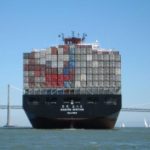Ocean transportation mode in 2021: Priority #1 will be to secure capacity, but customers should expect higher rates
 In 2020, exporters and importers using ocean transportation fought a seemingly constant battle to secure the freight capacity they needed, only to get burnt when they did on the cost side. As we write this opinion piece, several carriers have stopped taking bookings in China and are rationing equipment pickups in multiple regions.
In 2020, exporters and importers using ocean transportation fought a seemingly constant battle to secure the freight capacity they needed, only to get burnt when they did on the cost side. As we write this opinion piece, several carriers have stopped taking bookings in China and are rationing equipment pickups in multiple regions.
The carriers’ and forwarders’ requests for “premium” surcharges to secure capacity or equipment – on top of contract rates or on top of reported FAK rates – are being paid by many (but not all) companies desperate to get their cargoes moving, a survey of members of the Drewry benchmarking club has found.
When 2020 contracts were originally signed back in late 2019 and early 2020, many companies were overly cautious and set their contractual “minimum quantity commitment” with ocean carriers too low. But a surge in volume meant that later in the year, many found themselves having to switch to the spot market or to the Non-Vessel Operating Common Carrier (NVOCC) market and accept costs that were at a premium to those original contract rates – to secure additional capacity to meet their uncontracted needs.
For the forthcoming 2021/22 transpacific contract season, exporters and importers – particularly US importers – will want to avoid a repeat of this year’s transportation capacity ‘crunch’ and unexpected jump in shipping costs this caused. Priority #1 for the ocean transportation mode, will be for their service providers to provide far better security of supply.
Many of our customers are already planning for this and improving that visibility, security and confidence by increasing their minimum quantity commitments to ocean carriers. Crucially, the relevant contract clauses, service level agreements and Key Performance Indicators all need to be defined and agreed with their ocean carriers to support and control capacity requirements. This is a sound strategy.
Key questions for 2021
- Will higher MQC ensure more reliability of supply?
- What type of MQC and service guarantee clauses?
- Will ocean carriers provide more reliable access to capacity than NVOCCs in 2021?
- How to manage providers and hold them accountable more effectively in 2021
- Who were my reliable providers in 2020?
- New bid strategy or new contract duration?
- What level of rate increases are acceptable and how long will high rates last?
Source: Drewry Supply Chain Advisors
Ocean freight rates per container are expected to rise by double digits in the next annual transpacific contracts. How should companies manage this? Some companies this year are making bold moves to centralise their management of global transportation and taking measures to reduce other variables costs to offset the surge in freight rates. Logistics and procurement departments should also consider benchmarking their ocean rates to ensure that they limit the forthcoming rate rises on the transpacific lanes to what other companies are really paying – and not more.
Source: Drewry

 Hellenic Shipping News Worldwide Hellenic Shipping News Worldwide, Online Daily Newspaper on Hellenic and International Shipping
Hellenic Shipping News Worldwide Hellenic Shipping News Worldwide, Online Daily Newspaper on Hellenic and International Shipping























 PG-Software
PG-Software